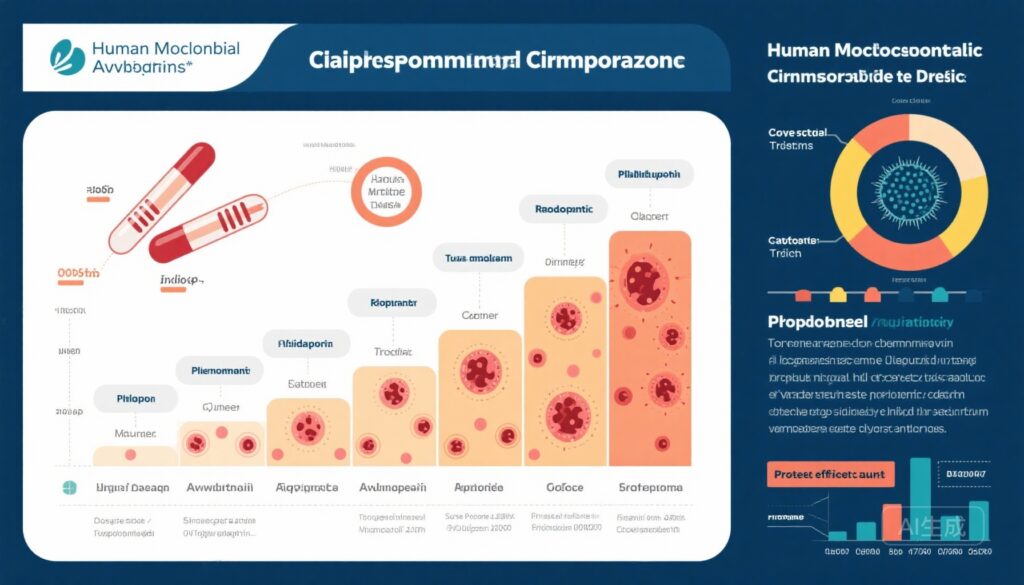Highlights
- MAM01, a human monoclonal antibody targeting the conserved NANP repeat region of P. falciparum circumsporozoite protein, demonstrated safety and clinical proof-of-concept for malaria prevention in malaria-naive adults.
- Phase 1 adaptive dose-escalation trial showed no treatment-related serious adverse events and identified a protective serum concentration threshold (>88 µg/mL).
- MAM01 efficacy aligns with emerging evidence from related monoclonal antibodies such as CIS43LS and L9LS that offer potential for simplified malaria prophylaxis.
- Future feasibility depends on optimizing dose regimens, lowering manufacturing costs, and targeting populations at highest risk.
Background
Malaria remains a major global health challenge, particularly in sub-Saharan Africa where Plasmodium falciparum is responsible for substantial childhood mortality. Traditional approaches including vector control and chemoprophylaxis have yielded gains, yet recent control efforts have plateaued. The only WHO-approved malaria vaccine, RTS,S/AS01, provides moderate protection, but vaccine efficacy wanes and requires multiple doses. This underscores the critical need for novel preventative strategies.
Monoclonal antibodies (mAbs) directed against the P. falciparum circumsporozoite protein (CSP)—the predominant surface antigen of sporozoites—have emerged as promising interventions. CSP contains a conserved central repeat region rich in NANP motifs essential for sporozoite infectivity. Targeting this region with potent mAbs offers potential for durable and simplified malaria prevention, requiring fewer doses than vaccines, with rapid onset of protection.
Key Content
Development and Clinical Evaluation of MAM01
Lyke et al. (2025) reported the first-in-human, phase 1, dose-escalation, double-blind, placebo-controlled trial of MAM01 at the University of Maryland’s Center for Vaccine Development and Global Health (NCT05891236). This monoclonal antibody preferentially targets the conserved NANP repeat motif within CSP.
The study enrolled 38 healthy adults aged 18 to 50 years with no prior malaria exposure or vaccination. Participants were sequentially assigned to one of five dosing cohorts: 1.5, 5, 10, or 40 mg/kg intravenously, or 5 mg/kg subcutaneously, with a placebo group for comparison. Dose escalation was staggered by two-week intervals and conducted under robust randomization and masking procedures.
Eighteen to twenty-six weeks post-administration, participants underwent controlled human malaria infection (CHMI) via bites from five P. falciparum NF54-infected mosquitoes. Ultra-sensitive PCR monitoring for parasitemia was conducted up to day 27 post-exposure. Treatment was instituted upon detection of parasitemia or empirically at day 27 if absent.
Safety and Tolerability
MAM01 was well tolerated across all dosing cohorts. No treatment-related serious adverse events were reported after one or two doses. This favorable safety profile aligns with earlier mAb studies targeting CSP, such as CIS43LS and L9LS, which also demonstrated excellent tolerability.
Protective Efficacy and Pharmacokinetics
Among 22 participants who received MAM01 and underwent CHMI, 18 developed parasitemia, while none of the three participants receiving 40 mg/kg intravenously did, indicating complete protection at the highest dose tested.
Pharmacokinetic analysis determined a serum concentration threshold of approximately 88 μg/mL of MAM01 above which participants were protected from parasitemia. This pharmacodynamic correlate provides a target for dose optimization in future trials.
Contextualizing MAM01 Within the Monoclonal Antibody Landscape for Malaria
Parallel clinical investigations of other monoclonal antibodies, notably CIS43LS and L9LS, have reported similar protective efficacy:
– CIS43LS, targeting the NANP repeat, conferred 88% protection against parasitemia in a phase 1 trial and demonstrated 75-88% efficacy over six months in a phase 2 trial in Malian adults, with a half-life of approximately 56 days (Lyke et al., 2021; Cohen et al., 2022).
– L9LS, a next-generation mAb, showed 66-70% efficacy against P. falciparum infection in children in Mali when administered subcutaneously, with robust safety (Shi et al., 2024).
– TB31F, targeting a different antigen involved in transmission, demonstrated potent transmission-blocking activity in early phase trials, expanding the potential utility of mAbs for malaria control (de Jong et al., 2022).
These findings collectively validate monoclonal antibodies targeting CSP as a safe and effective strategy to prevent malaria infection, with advantages including long half-life, subcutaneous administration potential, and efficacy at relatively low doses.
Expert Commentary
The trial of MAM01 confirms the paradigm that monoclonal antibodies targeting conserved CSP epitopes can confer high-level protection against P. falciparum infection in malaria-naive adults. The double-blind, placebo-controlled, adaptive design strengthens the validity of safety and efficacy data.
Mechanistically, targeting the NANP repeat region impedes sporozoite invasion of hepatocytes, the critical initial stage of malaria infection, thereby preventing blood-stage parasitemia and clinical disease.
However, for widescale deployment, challenges remain, including manufacturing scale-up to reduce costs, establishing optimal dosing regimens to balance efficacy and affordability, and validation in diverse populations, especially young children and semi-immune individuals in endemic settings.
Notably, the protective serum level identified (~88 μg/mL) exceeds the lower thresholds reported for related antibodies like L9LS (~9 μg/mL), potentially reflecting differences in antibody affinity, potency, or assay methods. Head-to-head comparisons and standardization are warranted.
Moreover, controlled human malaria infection models, while invaluable for early proof-of-concept, may not fully capture field efficacy or long-term protection, necessitating phase 2 and 3 trials in endemic areas.
Conclusion
Monoclonal antibody MAM01 provides promising early-phase evidence of safety and protective efficacy against controlled malaria infection in malaria-naive adults. Alongside other advancing monoclonal antibodies like CIS43LS and L9LS, MAM01 adds to a growing arsenal that could transform malaria prevention strategies.
Future work should focus on dose optimization, cost-effectiveness analyses, and assessment in at-risk populations in endemic regions to realize the clinical and public health potential of monoclonal antibodies in malaria control and elimination efforts.
References
- Lyke KE et al. Human monoclonal antibody MAM01 for protection against malaria in adults in the USA: a first-in-human, phase 1, dose-escalation, double-blind, placebo-controlled, adaptive trial. Lancet Infect Dis. 2025 Sep 23:S1473-3099(25)00481-5. PMID: 41005346.
- Cohen J et al. Safety and Efficacy of a Monoclonal Antibody against Malaria in Mali. N Engl J Med. 2022 Nov 17;387(20):1833-1842. PMID: 36317783.
- Shi Y et al. Subcutaneous Administration of a Monoclonal Antibody to Prevent Malaria. N Engl J Med. 2024 May 2;390(17):1549-1559. PMID: 38669354.
- Lyke KE et al. Low-dose intravenous and subcutaneous CIS43LS monoclonal antibody for protection against malaria (VRC 612 Part C): a phase 1, adaptive trial. Lancet Infect Dis. 2023 May;23(5):578-588. PMID: 36708738.
- de Jong NW et al. Safety, tolerability, and Plasmodium falciparum transmission-reducing activity of monoclonal antibody TB31F: a phase 1 trial. Lancet Infect Dis. 2022 Nov;22(11):1596-1605. PMID: 35963275.
- Lyke KE et al. A Monoclonal Antibody for Malaria Prevention. N Engl J Med. 2021 Aug 26;385(9):803-814. PMID: 34379916.



